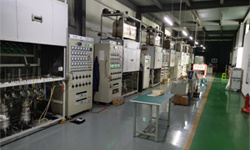
Blog
X-ray tube principle
2023-11-01
The X-ray tube is a vacuum diode operating at a high voltage. It contains two electrodes: one is a filament for emitting electrons as a cathode, and the other is a target for receiving electron bombardment as an anode. Both stages are sealed in a high vacuum glass or ceramic housing.
A vacuum electronic device that uses high-speed electrons to strike a metal target surface to generate X-rays. According to the way of producing electrons, X-ray tubes can be divided into two categories: gas tubes and vacuum tubes.
X-ray tube
The gas-filled X-ray tube was an early X-ray tube. In 1895, W.C. Roentgen discovered X-rays while conducting a Crooks tube experiment. The Crookes tube was the first gas-filled X-ray tube. After the tube is connected to high pressure, the gas in the tube is ionized, and under the bombardment of positive ions, electrons escape from the cathode and impact the target surface to produce X-rays after acceleration. The inflatable X-ray tube has the advantages of small power, short life and difficult control, and has been rarely used. In 1913, W.D. Kuligi invented the vacuum X-ray tube. The vacuum degree in the tube is not less than 10-4 Pa. The cathode is a straight-heated spiral tungsten wire, and the anode is a metal target embedded in the end face of a copper block. The target material and electron beam energy are selected according to the purpose of the tube, and tungsten is commonly used as the target material. In some applications, silver, palladium, rhodium, platinum, copper, nickel, cobalt, iron, chromium and other materials are also used. The operating temperature of the cathode is about 2000K, and the emitted electrons are accelerated by tens of thousands to hundreds of thousands of volts and hit the target surface. The cathode is surrounded by a metal shield with a front end slotted. The metal shield has a potential equal to or lower than the cathode, forcing the electrons to focus in a narrow area on the target surface, forming a focal spot. X-rays are radiated in all directions from the focal spot and output through a window in the tube wall. The window is generally made of beryllium, aluminum or light glass with little absorption of X-rays, and the beryllium sheet is the best.
Previous Page
Previous Page
[Related professional knowledge] X-ray tube
2024/08/02
Introduction of X-ray tube related terms
2023/11/01





